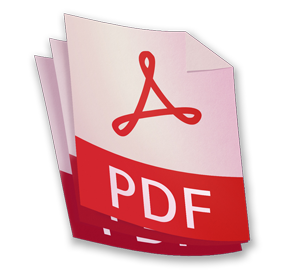Welcome to Home Inventory Support. We're here to Help!
If you're having problems with Home Inventory 4 for Mac, don't panic. We'll have you back up and running in no time.
Report an issue or request a feature:
Recent changes:
- Fixed the issue preventing users from entering license keys
- Support for macOS Tahoe
- Minor UI improvements and bug fixes
Frequently Asked Questions:
- Application's display name has changed to 'Home Inventory 4' in your 'Applications' folder. If you have a Dock shortcut you will need to replace it.
- Click on the 'Backup to file ...' command from the backup or restore toolbar button's menu.
- In the backup form, choose the destination folder and click on the Save button. In case you want to use iCloud, choose the iCloud drive's folder.
- If you don't want to use iCloud drive, open a Finder window, find your backup file and copy it to your cloud storage. Check the 'How-to video guides' for more informationn on how to do backups and restores.
- If you forgot your Blue Plum Home Inventory password, and the hint you added is not enough to help you remember it, you can see the password from the Apple MacOS Keychain application.
- If you have the administrative access to your Mac, you can open the Keychain application and search for the "UserAccount" term. Double-click on the "Blue Plum Home Inventory" row and select the "Show Password" check box in the form that will be displayed. Your application password will become visible.
- If you were not able to find your password in the keychan access application, execute the following commands from a command line prompt (macOS Terminal application):
security delete-generic-password -s "Home Inventory 4.app" -a "UserAccount"
All application data is stored in the macOS users’ application’s sandbox folder, which is the designated location where the application has implicit read/write access. The exact folder location depends on where you purchased the application:
1. If purchased from the Mac App Store: /Users/your_macos_username/Library/Containers/com.theblueplum.niftynhi/Data/Documents
2. If purchased from our website: /Users/your_macos_username/Library/Containers/com.theblueplum.niftynhi2/Data/Documents
In recent years, Apple has implemented a feature that maps these sandbox folders to the user’s Documents folder, making it appear as though the application files are stored directly within your Documents folder. The mapped folder would appear as “Home Inventory 4” with a small Home Inventory application icon in your Documents folder.
1. If purchased from the Mac App Store: /Users/your_macos_username/Library/Containers/com.theblueplum.niftynhi/Data/Documents
2. If purchased from our website: /Users/your_macos_username/Library/Containers/com.theblueplum.niftynhi2/Data/Documents
In recent years, Apple has implemented a feature that maps these sandbox folders to the user’s Documents folder, making it appear as though the application files are stored directly within your Documents folder. The mapped folder would appear as “Home Inventory 4” with a small Home Inventory application icon in your Documents folder.
Once photos are successfully transferred, they are intentionally removed from the iOS app. This is done primarily to save storage space on the iPhone, since inventory photos, videos, and documents can take up a significant amount of space.
The iPhone app was created years ago, before Apple introduced iCloud Photos. At the time, it was likely the only way to transfer photos from an iPhone to the Mac application. As described, the iOS app’s sole purpose is to transfer photos to the main macOS application, not to function as a full-featured home inventory app. That’s why its features are limited and why it is free.
The app continues to be maintained for the benefit of existing users, but no new features will be added. If you now have iCloud Photos enabled (which is the default setting in macOS), you can access your iOS photos directly from the Mac application. Learn more about iCloud Photos here: https://support.apple.com/en-ca/guide/icloud/mm7e90c1ba48/1.0/icloud/1.0
The iPhone app was created years ago, before Apple introduced iCloud Photos. At the time, it was likely the only way to transfer photos from an iPhone to the Mac application. As described, the iOS app’s sole purpose is to transfer photos to the main macOS application, not to function as a full-featured home inventory app. That’s why its features are limited and why it is free.
The app continues to be maintained for the benefit of existing users, but no new features will be added. If you now have iCloud Photos enabled (which is the default setting in macOS), you can access your iOS photos directly from the Mac application. Learn more about iCloud Photos here: https://support.apple.com/en-ca/guide/icloud/mm7e90c1ba48/1.0/icloud/1.0
How to reinstall the software (AppStore)?
To reinstall the application, you must use the same Apple App Store account and remain in the same App Store country where you originally purchased the license. On your Mac, sign in to the App Store and locate the application again — the App Store should display a “Download” button instead of a “Buy” option.
Since you originally installed the app from the App Store, please do not download it from the application’s website. The version available on the website (theblueplum.com) uses a different licensing model, so the “Forgot your license key” feature will not work. You should install it only from the App Store.
Apple does not share licensing information for App Store purchases with developers. Because of this, we are unable to assist with licensing-related issues. If you continue to experience problems reinstalling the application, please contact Apple Support for further assistance.
To reinstall the application, you must use the same Apple App Store account and remain in the same App Store country where you originally purchased the license. On your Mac, sign in to the App Store and locate the application again — the App Store should display a “Download” button instead of a “Buy” option.
Since you originally installed the app from the App Store, please do not download it from the application’s website. The version available on the website (theblueplum.com) uses a different licensing model, so the “Forgot your license key” feature will not work. You should install it only from the App Store.
Apple does not share licensing information for App Store purchases with developers. Because of this, we are unable to assist with licensing-related issues. If you continue to experience problems reinstalling the application, please contact Apple Support for further assistance.
How to reinstall the software (Website/direct)?
To reinstall the application, download the latest version from the application’s webpage (not from the AppStore): https://theblueplum.com/mac/homeinventory/
Once the installation is complete, enter your licensing information (email and license key) when prompted, or use the “Purchase/Activate License” option from the main menu. If you’ve forgotten your license key, please create a support request.
To reinstall the application, download the latest version from the application’s webpage (not from the AppStore): https://theblueplum.com/mac/homeinventory/
Once the installation is complete, enter your licensing information (email and license key) when prompted, or use the “Purchase/Activate License” option from the main menu. If you’ve forgotten your license key, please create a support request.
Yes, you can install the application on multiple computers, regardless of whether you purchased it from the App Store or directly.
You cannot change the location of the application data, but you can export an inventory file from one Mac and import it on another.
When you import the file on the second Mac, any new records created on the first Mac will be appended to the inventory.
Please note that there are two ways to import data:
Please note that there are two ways to import data:
- Restore - deletes all existing data and replaces it with the imported data.
- Import/Merge - adds records from the import file to the existing local inventory.
To add insurance that applies to more than one inventory item, go to Properties/Locations (the left sidebar button with a geo pin). Create at least one property record, and then, within that property, create an insurance record. This insurance record will then appear in the “Covered by Property Insurance” drop-down list.
For example, if you’ve set the purchase price to $300 and the quantity to 2, and you’re expecting $600 to appear in the report, please go to the application preferences and enable the option “Unit-based purchase price.”
By default, this option is not selected, and the purchase price is treated as the total amount paid for the entire quantity.
If your old application was able to export data to a CSV file (Comma-Separated Values) and, optionally, images to a folder on your Mac, then yes — you can import your data.
- From the main menu, select "Inventory Data" → "Import Item List from CSV File..."
- Choose the CSV file exported from your previous application.
- Select the folder containing the exported images, receipts, etc.
- Map the column names to those supported by our application. The import process will attempt to match some automatically, but you should verify each mapping.
- Ensure that the date format in the exported file matches the date format in the import form. The application uses your computer’s locale settings by default.
Yes, drag & drop works, but there are other ways as well. You can check one of the “How To” videos.
First, select your inventory item, then open the tab called “Documents” (it should be selected by default). Next, simply drag a photo from your Finder window to the “Inventory Item Documents” list.
The Blue Plum Home Inventory application will run on Macs running macOS 11.0 (BigSur) or later:
- macOS 11 — Big Sur
- macOS 12 — Monterey
- macOS 13 — Ventura
- macOS 14 — Sonoma
- macOS 15 — Sequoia
- macOS 26 — Tahoe
Yes, we wrote it for ourselves and will support it for years to come.

